NFPA 14: Standard for the Installation of Standpipe and Hose Systems
NFPA 14 stipulates criteria for installing standpipes and hose systems, guaranteeing their efficacy in delivering adequate and reliable water supplies during fire emergencies.
Current Version: 2019
Revision Cycle: Fall 2026
Next Edition: 2027
Status: Active
Introduction
NFPA 14 provides comprehensive guidelines for the design, installation, and maintenance of standpipe and hose systems, which are crucial for fire protection in high-rise buildings and other large structures. The 2024 edition brings forward updates that enhance safety, efficiency, and compliance with modern fire safety practices.
Key Changes in the Latest Edition
- Updated Design Criteria: The 2024 edition introduces more precise design requirements for standpipe systems, ensuring that they are able to meet the needs of both fire service personnel and building occupants more effectively.
- Enhanced Hydraulic Calculations: The revised edition emphasizes the importance of more accurate hydraulic calculations for standpipe systems, ensuring that water pressure and flow rates are adequate for all possible fire scenarios, including those in taller buildings.
- Pressure Control Updates: A clearer approach to pressure control systems is introduced, particularly for high-rise buildings. This ensures the effective distribution of water and reduces the risk of over-pressurization or inadequate pressure during a fire emergency.
- System Flexibility for Modern Buildings: The 2024 edition includes provisions that address the installation of standpipe systems in modern building designs, which may have unique challenges such as non-traditional layouts or unconventional materials.
Notable Features of the Current Version
- Enhanced Safety for High-Rise Buildings: The 2024 edition strengthens safety features for taller buildings, ensuring that the standpipe system can meet the demands of both firefighting and occupant evacuation.
- Increased Focus on Pressure Management: A better approach to pressure control ensures optimal performance during emergencies, reducing the risk of failures in system operation.
- Adaptability for New Building Designs: Modern standpipe system installations are now better suited to meet the needs of complex and innovative building structures.
Practical Implications
The 2024 edition of NFPA 14 offers clear, actionable guidelines for fire protection engineers, architects, and contractors involved in the design and installation of standpipe systems. Its updated criteria ensure compliance with the latest fire safety protocols, enhancing both operational efficiency and safety.
Conclusion
NFPA 14: 2024 provides vital updates that improve the design, installation, and operation of standpipe and hose systems. These updates make the systems more effective for modern buildings and improve safety standards, particularly in high-rise environments.
Call to Action
To ensure compliance with the latest standards and to optimize your fire protection systems, refer to the official NFPA 14 (2024) document and consult with certified professionals to implement the updated guidelines in your building projects.
Book a free demo
Digitalize your Inspections with ZenFire
- Faster Inspection
- Deficiency Reporting
- Proposals
Everything you need in one Software.
Company
Support and Services
- (206) 456-8988
- 236 W 27th st Floor 12, New York, NY 10001, United States
- 299 Fremont St APT TH313, San Francisco, CA 94105
- A-302, Nyati Tech Park, New Kalyani Nagar, Wadgaon Sheri, Pune-411014
- hello@zentrades.pro
© 2025 ZenTrades Inc

